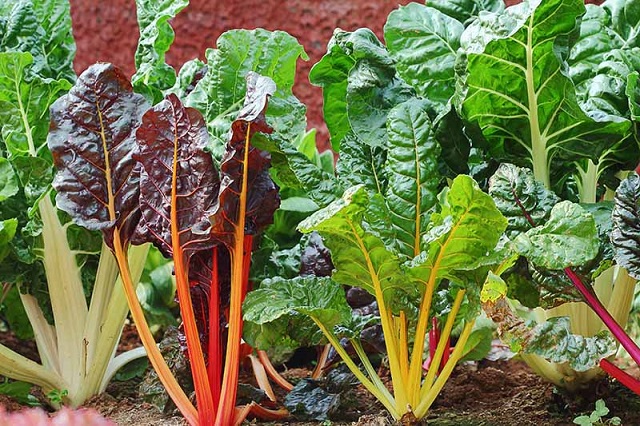9. Swiss Chard

Swiss chard has dark-green leaves with a thick stalk that is red, white, yellow or green. It’s often used in Mediterranean cooking and belongs to the same family as beets and spinach.
It has an earthy taste and is rich in minerals and vitamins, such as potassium, manganese and the vitamins A, C and K (26).
Swiss chard also contains a unique flavonoid called syringic acid — a compound that may be beneficial for lowering blood sugar levels (27).
In two small studies in rats with diabetes, oral administration of syringic acid for 30 days improved blood sugar levels (28, 29).
However, it’s important to note that these were minor animal studies and that human research supporting the claim that syringic acid may aid blood sugar control is lacking.
While many people typically throw away the stems of the Swiss chard plant, they’re crunchy and highly nutritious.
Next time, try adding all parts of the Swiss chard plant to dishes such as soups, tacos or casseroles.
